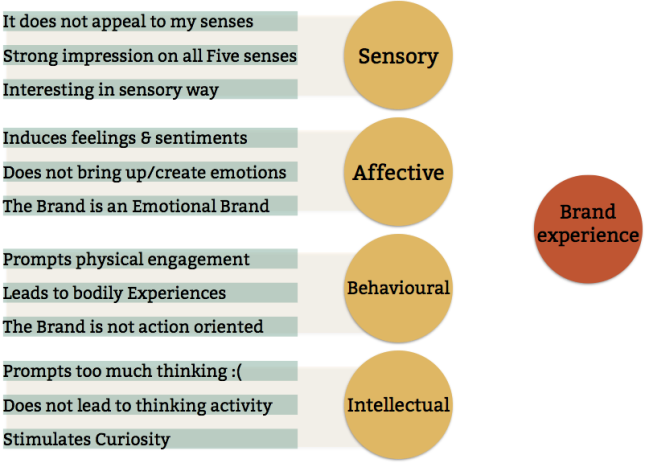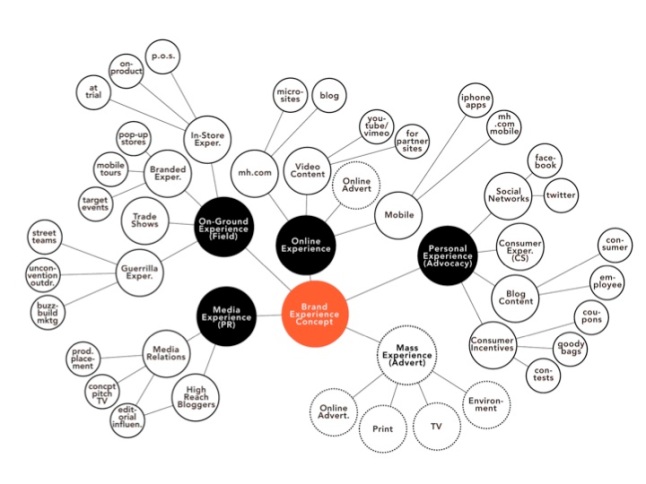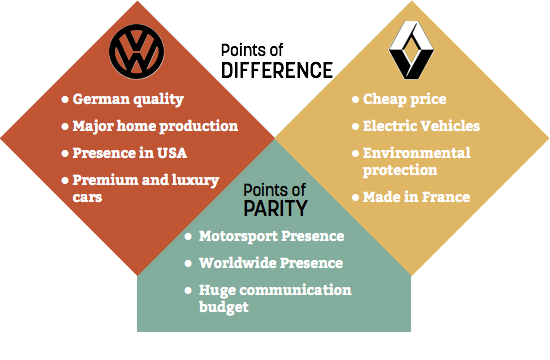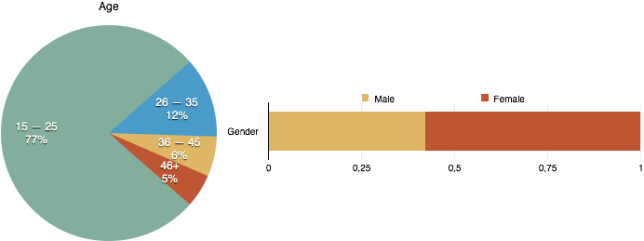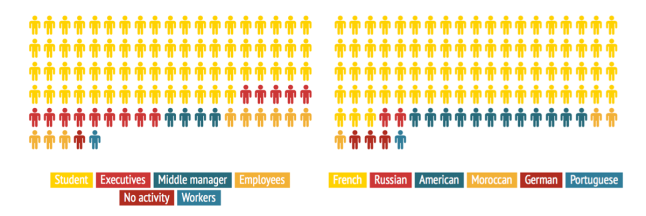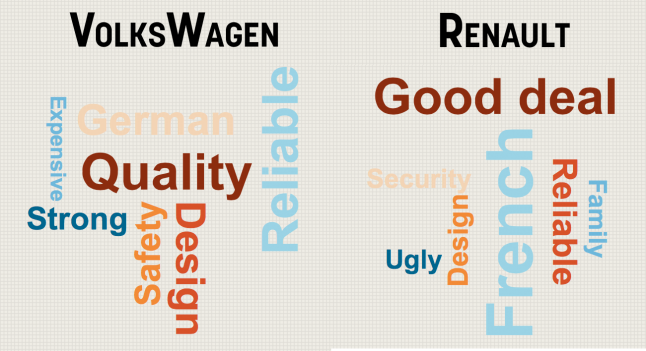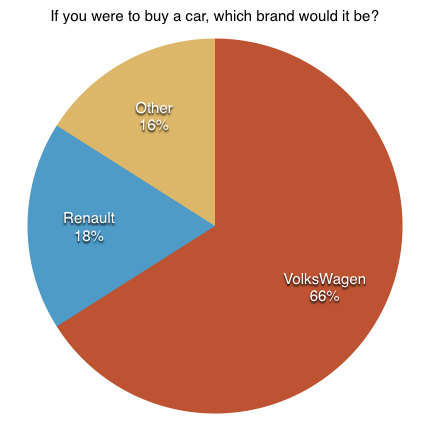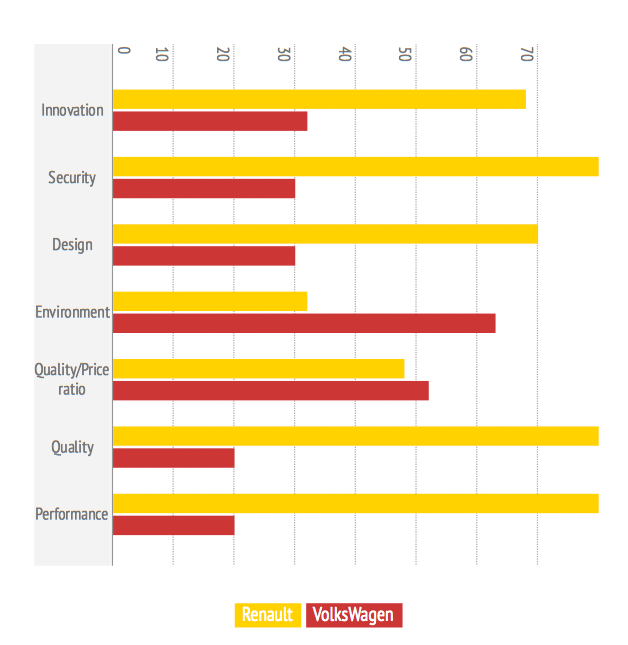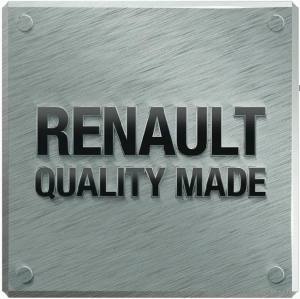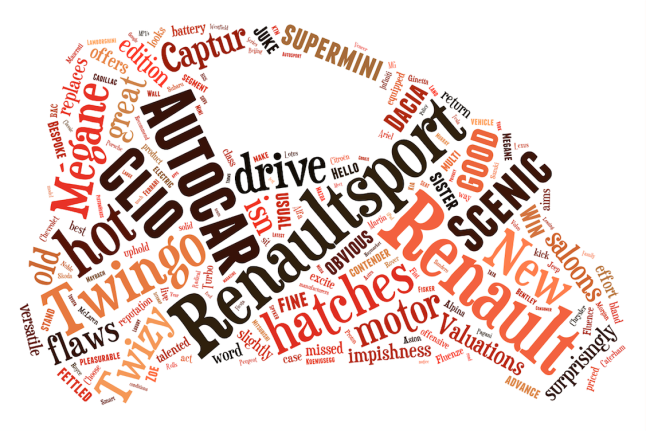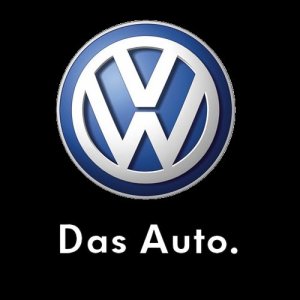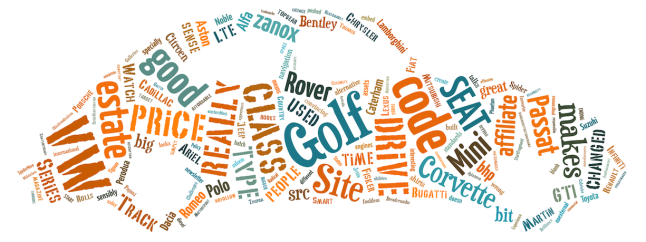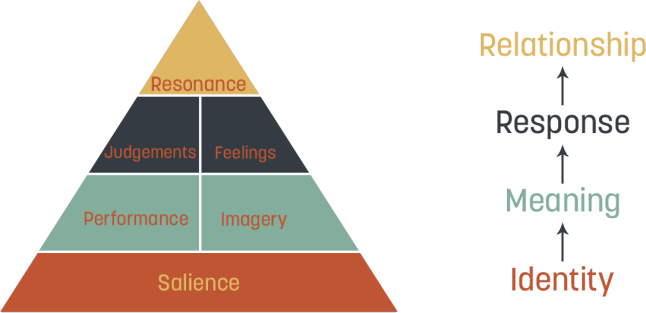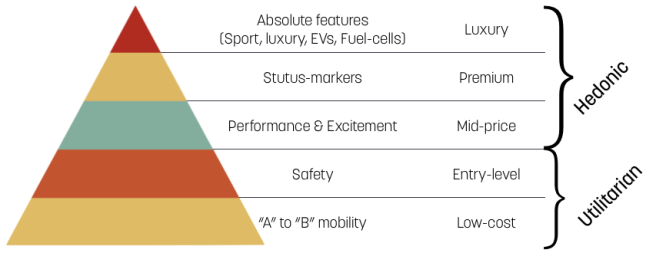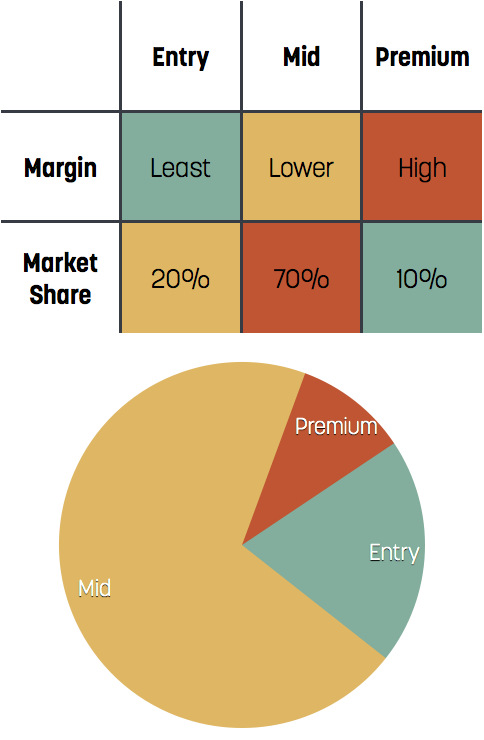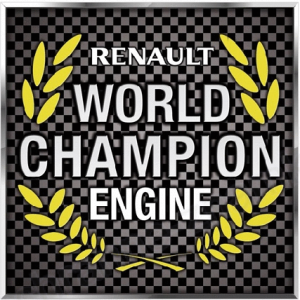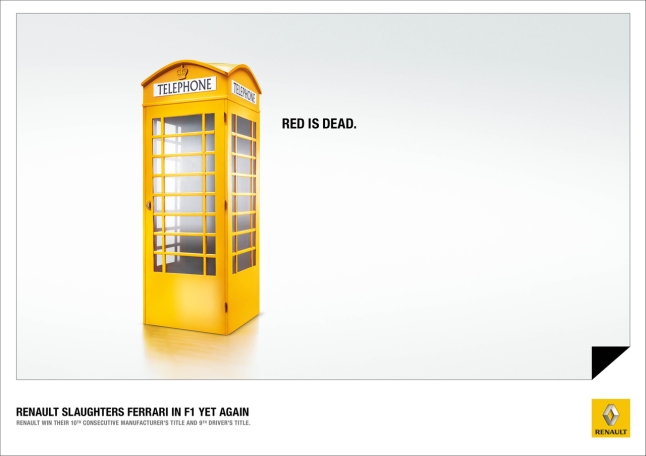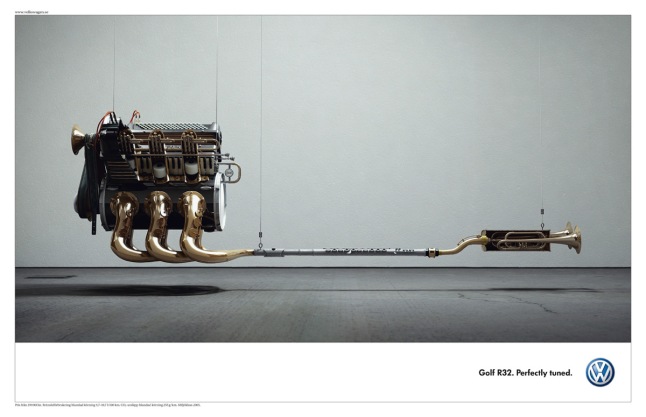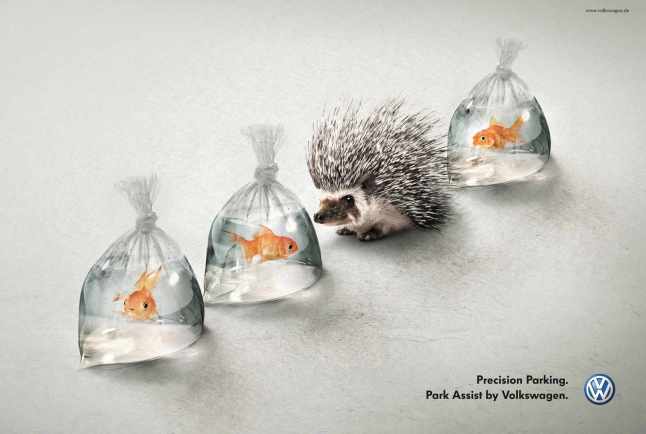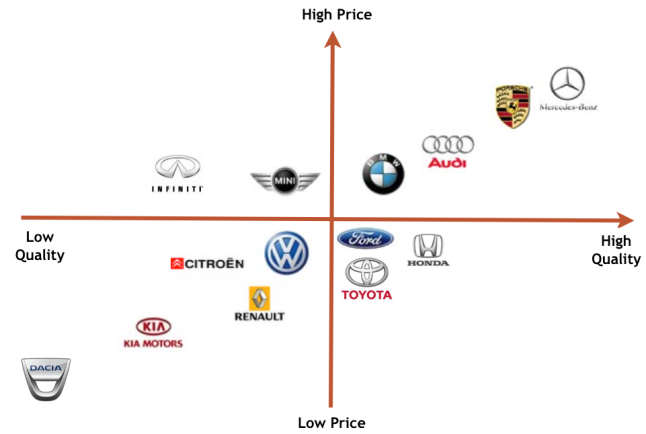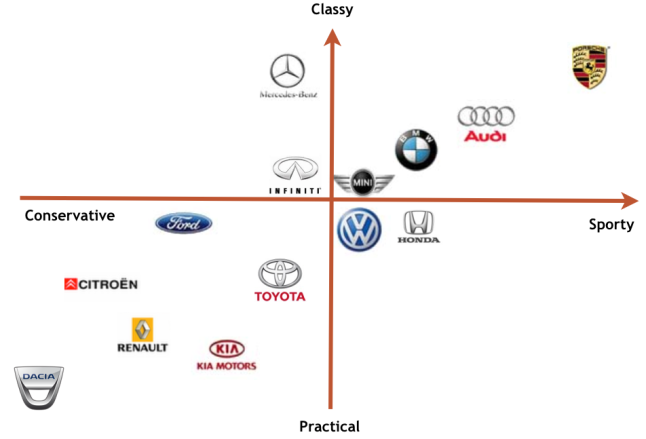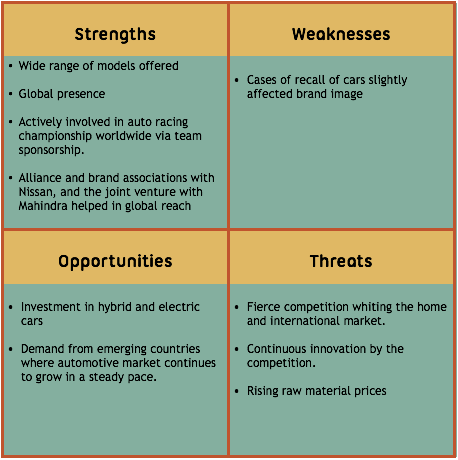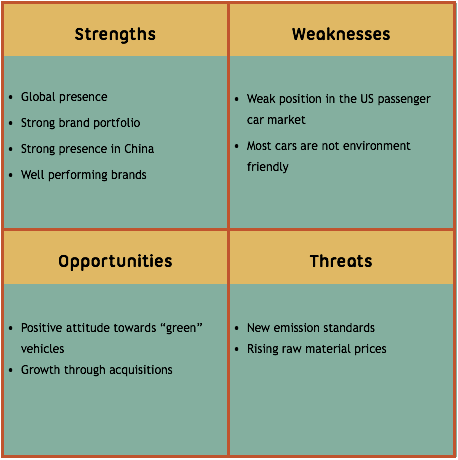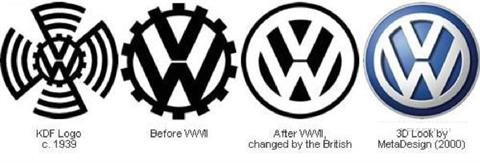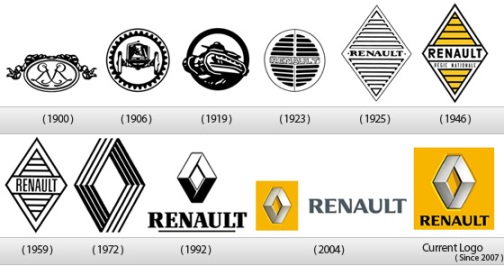Having conducted brand audit of Renault and Volkswagen, we’ve gather substantial amount of information. The best way to structure that information with regards to brand auditing is thoroughly building Kevin Keller’s CBBE pyramid for both brands. Below is the the final breakdown of the pyramid with highlights of essential notions in each type of brand attribute:
|
Renault has a strong degree of brand awareness. Although it is not one of the top brands that pop-up, when talking about cars in general. However, awareness becomes stronger within specific categories of cars. Company has presence in several car categories starting from entry-level vehicles and up to upper middle class, also having very strong presence in electric vehicles sector.
There are two categories, where Renault is out of reach for most competitors or car manufacturers: entry-level vehicles and electric cars. The company enjoys a dominating position of the market in both categories, hence, very strong awareness within those sectors and extended breadth of awareness.
|
Volkswagen has very strong brand awareness. It tends to be one of the first brands to be associated with automotive sector. Although the general consumer is unaware that the brand portfolio includes brands like Skoda , Bugatti,and Lamborghini, the company ranks very high in the mind of consumers thanks to the cognitive associations prompted by brand.
However, there is an interesting trend in volkswagen’s brand awareness dynamics — it tends to go upwards in segment associations: VW is increasingly viewed as expensive car, rather than “Volk’s”. It’s a vector company took in late 90s and still continues to follow.
|
|
Renault has pretty high manufacturing standards. In fact , it is the reason why they conquered entry-level segment — they managed to maintain quality in spite of drastic cost-cutting measures. Their gasoline engines are one of the most durable on the market, although, occasional flaws still happen. These
“occasional flaws” setback the company to it’s 1990s reputation. An era when the company products suffered chronic malfunctions on the average.
|
Volkswagen managed to establish one of the most effective cross-platform systems in the world. You can find the same components in Skoda, Volkswagen, Audi and Porsche. It means that luxury-segment quality standards are applied to those components, which contributes to overall quality of vehicles throughout all classes.
|

|
Renault has more passionate image. Throughout it’s advertisement campaign, the central focus of them were emotions, French style and passion. Thus Renault targets more emotional consumers.
|
Volkswagen tends to build it’s marketing campaigns around technical features of vehicles. Even the slogan of company states so: Das Auto — The Car. So, VW targets those consumers that appreciate mostly technology, precision and quality.
|
|
Renault vehicles are appreciated for their design, aesthetics and utility. However, quality still appears to be a weak point here. Despite integrating quality logo to Renault’s own logo, this attribute fails to change. Recently, Renault tried a new strategy for quality reinforcement — they are focusing on their success in car racing, hoping to translate that into inevitable consequence results of high quality.
|
Volkswagen vehicles are prided for their quality. Recently VW discovered that they have problems with their vision of a car and that of a consumer. To put it in another way, they started to have problems with aesthetics, utility and design aspects of their vehicles. However, problem was resolved by implementing more consumer-based approach in designing new vehicles.
|

|
Throughout various marketing incentives and supporting events, Renault products tend to provoke mostly Fun feelings and Excitement. Motorsports, crazy advertising campaigns all contribute to it. The EV products of the company obviously dramatically contribute to Social Approval kind of feelings. Electric vehicles became the symbols of fight against pollution (which it is not the case — they merely push pollution farther away from cities, but that’s OK), which is one of the main pillars of modern social responsibility.
Recently probe new kind of feeling association — through luxury
|
Volkswagen products are strongly associated with such feelings as security and self Respect. Quality and upper-mid price targeting significantly contribute to those feelings. But certain products of Volkswagen, especially those deep in middle-class segment tend to be associated with Fun. Various ads for Polo, Golf and Up are built around that feeling.
|

|
Strong competition in automotive industry prevents general cases of behavioural Loyalty, as purchases happen rarely and each time product is challenged by rivals. However, certain electric models of Renault, like Traffic z.e. stay mostly unchallenged and recurring purchases occur within fleet sales.
Attitudinal: According to our surveys Renault is perceived much like commodity rather than something greater. It failed to become a Love mark. However, certain sub-brands of Renault has developed thriving communities around them. EVs and sport cars seem to be somewhat different from how the brand is perceived in general. They have loyal consumers, that do not want to change the brand because the successfully blinded together.
|
Volkswagen mostly faces the same issues as Renault. It’s hard to hook consumers for long. However, being positioned higher in budget segmentation, volkswagen cars are more than just commodity. Some owners of certain models, such as Golf seem to be loyal to the brand and invest in updated versions and facelifts of the same model from year to year. In the sports division of Volkswagen situation is much the same, as in Renault. Sport models of company has become a centre of gravity for various communities of owners.
But Volkswagen has one more thing, that adds significantly to it’s perception as a Lovemark; generating resonance — powerful heritage of models, that had very strong cultural impact on various societies throughout the world.
|
Volkswagen has serious problems with positioning and sometimes confuses consumers with regards to what segment certain subtends occupy. The second serious problem for Volkswagen is absence in entry-level market.
Renault has problems in establishing reputation of quality brand and is often perceived as producer of commodities. This may be backfired expansive strategy on entry-level market. But company has serious potential in future. It has successfully invested in electric vehicles and firmly established itself as producer of such goods. Having excessively strong positions on this market, Renault only has to keep pace.







